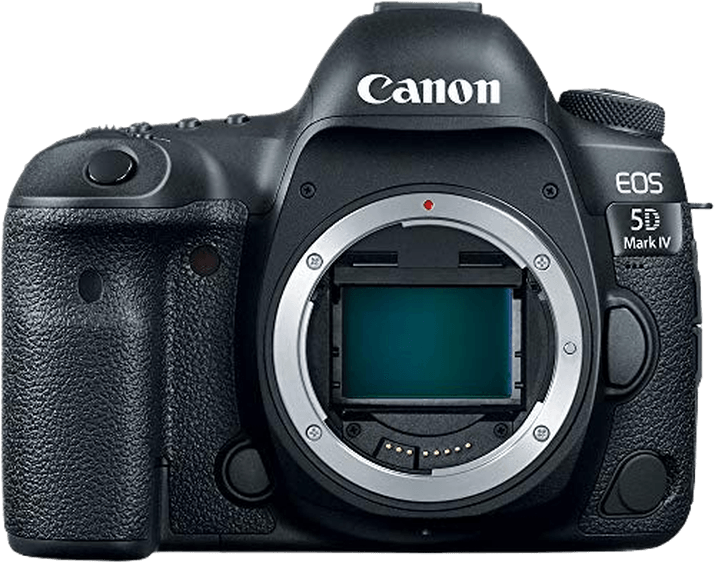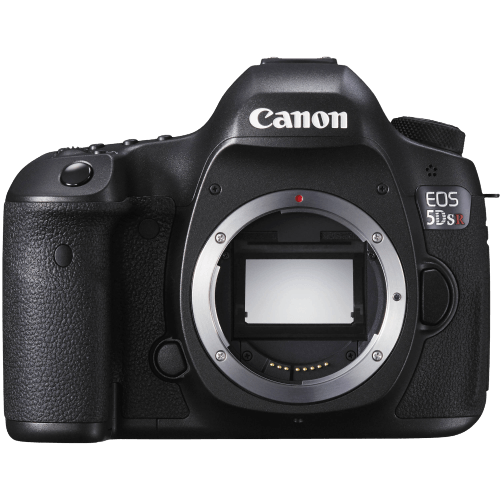Canon EOS 5D Mark IV vs EOS 5DS R Comparison
Canon EOS 5D Mark IV

Canon EOS 5DS R

The Canon EOS 5D Mark IV takes the lead with a score of 75/100, while the Canon EOS 5DS R lags behind with a score of 68/100. Both cameras are DSLRs and share common specifications like camera size (151 x 116 x 76mm for the 5D Mark IV and 152 x 116 x 76mm for the 5DS R) and announcement dates in 2015 and 2016, respectively.
The 5D Mark IV outshines the 5DS R with a lower launch price of $3500 compared to $3900 and a lighter weight of 890g versus 930g. The winning camera, 5D Mark IV, offers better value for the money and easier handling due to its lighter weight.
On the other hand, the 5DS R doesn’t have any clear advantages over the 5D Mark IV. It’s slightly heavier and more expensive, making it less appealing to potential buyers.
Taking these points into account, the Canon EOS 5D Mark IV emerges as the superior choice with its better score, lower price, and lighter weight. The Canon EOS 5DS R, while still a decent option, falls short in comparison.
Canon EOS 5D Mark IV vs EOS 5DS R Overview and Optics
The Canon EOS 5D Mark IV wins in the optics comparison with a score of 76/100, while the Canon EOS 5DS R scores 73/100. Both cameras share common specifications such as CMOS sensor type, Full Frame sensor size, Canon EF lens mount, and the absence of image stabilization.
The 5D Mark IV gains an advantage with its 7 fps shooting speed, compared to the 5DS R’s 5 fps. This faster shooting speed allows capturing more shots in a shorter time, making it ideal for action and sports photography. Additionally, the 5D Mark IV has a higher DXOMARK score for the sensor at 91, compared to the 5DS R’s score of 86. This indicates that the 5D Mark IV’s sensor performs better in terms of dynamic range, low light performance, and color depth.
On the other hand, the 5DS R offers a remarkable 50.6 megapixels, significantly higher than the 5D Mark IV’s 30.4 megapixels. This higher resolution allows for more detailed images and larger prints. The 5DS R also features a Dual Digic 6 processor, providing faster image processing and better noise reduction compared to the 5D Mark IV’s single Digic 6+ processor.
Each camera has its strengths and weaknesses in the optics department. The 5D Mark IV is better for action and low light photography due to its faster shooting speed and higher DXOMARK sensor score. The 5DS R excels in resolution and image processing, making it suitable for photographers who prioritize detail and large prints. Ultimately, the choice between these two cameras depends on the specific needs and preferences of the photographer.
Canon EOS 5D Mark IV vs EOS 5DS R Video Performance
The Canon EOS 5D Mark IV outperforms the Canon EOS 5DS R in video capabilities, scoring 91/100 compared to the 5DS R’s 57/100. Both cameras share some common features, such as built-in time-lapse functionality, which allows users to create stunning time-lapse videos without the need for additional equipment.
The 5D Mark IV’s superiority in video performance is evident in its higher maximum video resolution and frame rate. It can capture 4K video at a resolution of 4096 x 2160, while the 5DS R is limited to Full HD at 1920 x 1080. Additionally, the 5D Mark IV boasts a maximum video frame rate of 120fps, enabling users to create smooth slow-motion footage. In contrast, the 5DS R’s frame rate reaches only 30fps, which is less suitable for slow-motion effects.
Although the 5DS R has a lower video score, it still offers valuable features for photographers who prioritize still images over video. Its 50.6-megapixel sensor provides exceptional detail and resolution for still photography. However, this advantage does not extend to video performance, where the 5D Mark IV remains the clear winner.
Considering these factors, the Canon EOS 5D Mark IV is the superior choice for photographers seeking advanced video capabilities, with its 4K resolution and 120fps frame rate. However, the Canon EOS 5DS R remains a viable option for those who prioritize high-resolution still photography and are satisfied with Full HD video quality.
Canon EOS 5D Mark IV vs EOS 5DS R Features and Benefits
The Canon EOS 5D Mark IV outperforms the Canon EOS 5DS R in features with a score of 74/100, while the 5DS R scores 59/100. Both cameras share a 3.2-inch screen size and lack a flip screen. However, there are significant differences in their other features.
The 5D Mark IV has a higher screen resolution of 1,620,000 dots compared to the 5DS R’s 1,040,000 dots. This means the 5D Mark IV provides a clearer and sharper display. Additionally, the 5D Mark IV has a touchscreen, allowing users to navigate menus and adjust settings with ease. The 5DS R does not have this feature.
In terms of connectivity, the 5D Mark IV is superior as it has GPS and WIFI capabilities, while the 5DS R does not. GPS allows users to geotag their photos, making it easier to organize and locate images based on location. WIFI connectivity enables wireless transfer of images and remote control of the camera through a smartphone or tablet.
The 5DS R does not have any advantages over the 5D Mark IV in terms of features. Its lower score reflects its fewer capabilities compared to the 5D Mark IV.
Considering these points, the Canon EOS 5D Mark IV is the better option when it comes to features. Its higher screen resolution, touchscreen, GPS, and WIFI make it more versatile and user-friendly than the Canon EOS 5DS R. The 5DS R, on the other hand, lacks these features, making it less appealing for users who prioritize these aspects in a camera.
Canon EOS 5D Mark IV vs EOS 5DS R Storage and Battery
The Canon EOS 5D Mark IV outperforms the Canon EOS 5DS R in storage and battery with a score of 71/100 compared to 65/100. Both cameras share two memory card slots, accepting SD/SDHC/SDXC (UHS-I compatible) and Compact Flash cards. Neither camera offers USB charging.
The 5D Mark IV’s advantage lies in its battery life, providing 900 shots per charge compared to the 5DS R’s 700 shots. This longer battery life is due to the LP-E6N battery type used in the 5D Mark IV. The 5DS R uses the LP-E6 battery type, resulting in a shorter battery life.
Despite the 5DS R’s lower score and shorter battery life, it still offers decent storage and battery capabilities for most photography needs. However, the 5D Mark IV is the clear winner in this category, providing greater battery life for extended shooting sessions.
Canon EOS 5D Mark IV vs EOS 5DS R Alternatives
Still not sure which Canon DSLR is the best choice for you? Try some of these trending comparisons for more inspiration:
